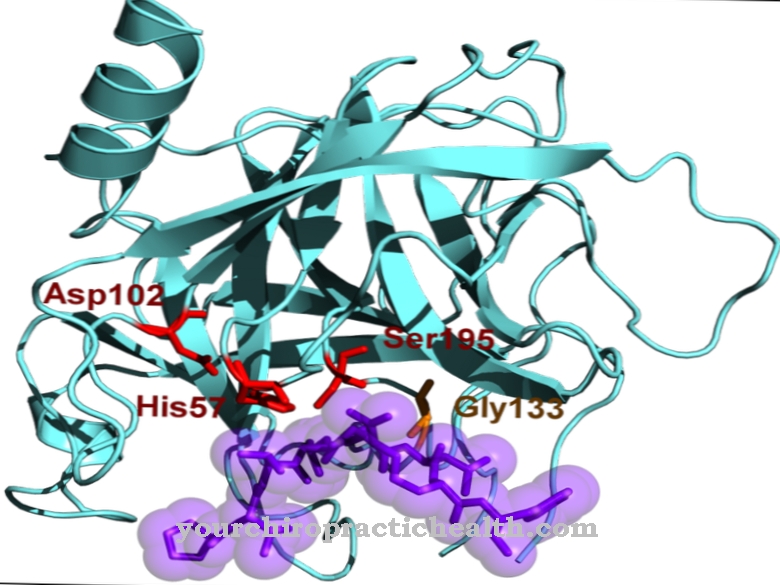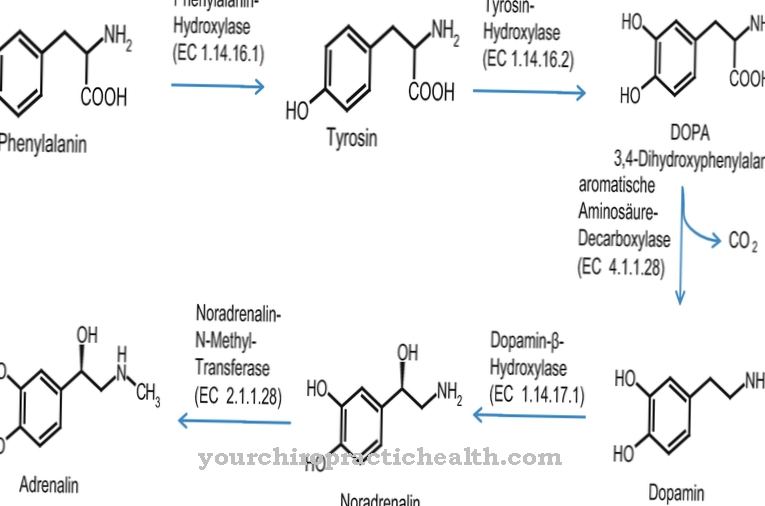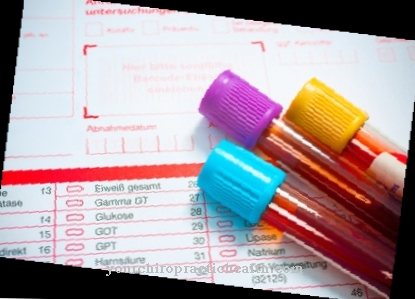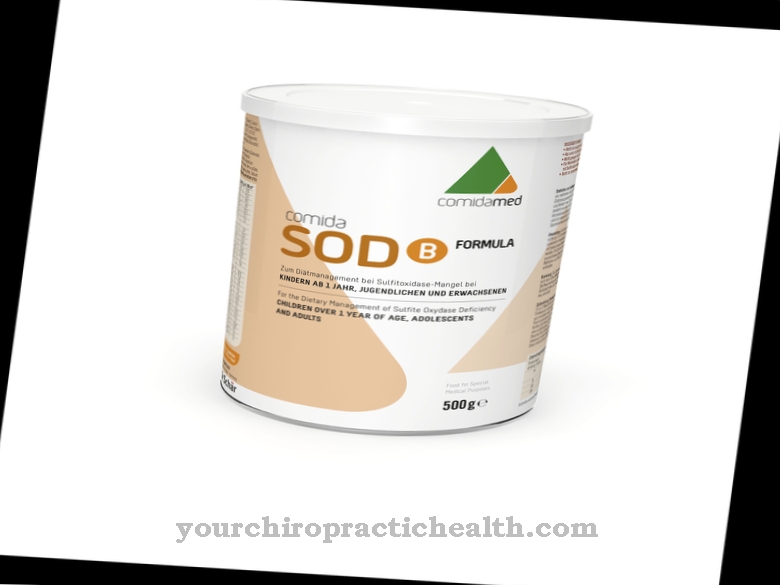While cholesterol As a natural substance plays an important role in the human body, it also harbors health risks. Various diseases are associated with high cholesterol levels. Also read the article: Increased cholesterol level (hypercholesterolemia)
What is cholesterol

cholesterol is an important molecule and lipid (fat) that is found primarily in animal cells. The human body absorbs the cholesterol it needs with food, but it also produces it itself. The body's own production of cholesterol takes place in the liver and intestines.
Since cholesterol is poorly soluble in water, it needs means of transport in the bloodstream of the human body. These means of transport are certain proteins, which are also known as lipoproteins. The lipoproteins LDL (Low Density Lipoprotein Cholesterol) and HDL (High Density Lipoprotein Cholesterol) are responsible for the transport of cholesterol.
The level of cholesterol in a person's blood can be determined using a blood test. The HDL cholesterol level is also known colloquially as the 'good cholesterol', while the LDL cholesterol is also called the 'bad cholesterol'.
Meaning & function
cholesterol performs important functions in the human body. For example, cholesterol is a component of cell walls. Cholesterol is needed to build and maintain cell membranes.
Furthermore, cholesterol is used to produce substances such as bile acid (which, for example, supports digestion), provides a basis for the formation of so-called steroid hormones (which include sex hormones) and for the formation of fat-soluble vitamins such as vitamin D ( which is important for the mineralization of the bones), vitamin A and vitamin E.
Science suggests that cholesterol has antioxidant properties. This means that it can counteract unwanted oxidation of the body's own substances, which otherwise could possibly promote the development of diseases and promote aging processes. Studies have shown that cholesterol is important for the body's immune system; here the cholesterol is supposed to promote protective functions against cancer, among other things.
A high percentage of cholesterol is found in breast milk. This is probably related to the fact that cholesterol plays an important role in the development of the brain and nervous system.
Studies have shown connections between low cholesterol and various problems. For example, a low level of cholesterol in expectant mothers was found to be a risk factor for a low birth weight in the newborn child.
In children and adolescents, there were also connections between a low cholesterol level and a high number of dropouts from school. Finally, a low cholesterol level could also be identified as a possible risk factor for the development of depression.
Dangers, disorders, risks & diseases
Besides its important functions in the human body, cholesterol also contribute to various diseases. In medicine, for example, an increased level of so-called LDL cholesterol is made jointly responsible for the development of arteriosclerosis and so-called coronary heart disease (also abbreviated as CHD).
Atherosclerosis is hardening of the arteries, which is promoted, among other things, by the deposition of cholesterol on the arterial walls. This restricts blood flow and can lead to high blood pressure and coronary heart disease, in which the heart muscle is not supplied with sufficient blood. In addition, the hardening of the arteries, which is favored by the cholesterol, represents a risk factor for suffering a heart attack.
Stroke is also one of the diseases whose risk can be increased due to cholesterol. This is the case, for example, when the carotid artery is narrowed.Possible consequences of a stroke include disorders of language and movement.
Cholesterol is also a component of gallstones. The cholesterol content in the bile is comparatively high anyway, but if the body receives large amounts of cholesterol, the bile can change. The background is that cholesterol is very poorly soluble in the bile and as a result so-called cholesterol stones form. While gallstones have different structures, cholesterol gallstones are the most common. The possible consequences of gallstones are biliary colic, i.e. cramp-like pain in the upper abdomen.













.jpg)

.jpg)
.jpg)











.jpg)